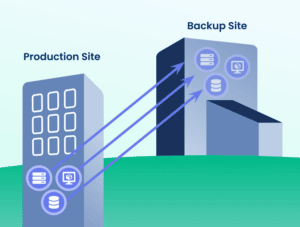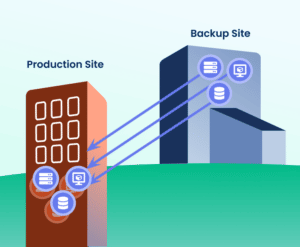Your data is vital for your business to function. Often, companies are not completely confident in what should be a part of their Business Continuity Plan (BCP), and do not understand that they need both data backup and disaster recovery to re-operationalize the business to be covered for outages and disasters.
Backup

Disaster Recovery
Disaster recovery services are designed to bring a business back online after a failure at the primary business site. Disaster recovery includes steps to operationalize the data back-ups, and bring back online networks and systems should an attack or outage occur. With a disaster recovery solution in place your organization’s data and the functioning of your IT systems are restored. An all-encompassing Disaster Recovery plan restores business functions and minimizes losses and downtimes. It includes server level and site level restoration. You may have to invest in an entire secondary IT infrastructure unless you have a Disaster Recovery as a Service (DRaaS) provider.

Business Continuity Plan
A Business Continuity Plan should include both backup procedures so that you protect your business from data loss, and disaster recovery plans to restore networks, systems and data after failure at your primary business site. For IT resiliency, your plan should include: active monitoring and assessment of IT hazards; resiliency risk assessment including potential consequences; risk and mitigation strategies; understanding of business relevance of the assets to understand business drivers and classify assets in terms of business criticality; and setting IT resilience priorities. Recovery plans should be drilled and tested regularly.
Aunalytics Backup and Disaster Recovery services will give your organization the peace of mind that, no matter what circumstances come, a trusted partner will have your back. You will not have to worry about data loss or theft, as backing up your on-premises data to the cloud will allow your company to have a business continuity plan in place to save critical business information, and you will have experts on hand to help your IT team restore networks, systems and data after a disaster.
